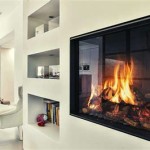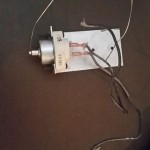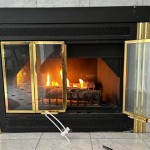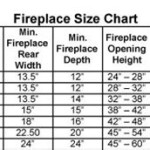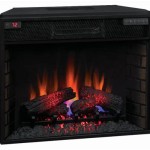Gas Fireplace Pilot Light: Summer Considerations
Gas fireplaces offer a convenient and aesthetically pleasing heating solution for many homes. Unlike wood-burning fireplaces, they eliminate the need for chopping wood and reduce concerns about smoke and creosote buildup. A key component of a gas fireplace is the pilot light, a small, continuous flame that ignites the main burner when heat is desired. While essential for operation during colder months, the pilot light's continuous burning during the summer raises several considerations regarding energy efficiency, safety, and potential maintenance.
Understanding the function of a gas fireplace pilot light is paramount before delving into summer-specific issues. The pilot light serves as a constant ignition source. When the thermostat or manual switch calls for heat, the gas valve opens, allowing gas to flow to the main burner. The pilot light instantly ignites this gas, producing the desired flame and heat. Without a functioning pilot light, the main burner will not ignite, rendering the fireplace inoperable. Older gas fireplaces often rely solely on the pilot light for ignition, while newer models may incorporate electronic ignition systems that only activate the pilot light when needed.
The constant operation of the pilot light, regardless of the season, consumes a small amount of natural gas or propane. While the individual gas consumption of a pilot light is relatively low, the cumulative effect over several summer months can contribute to increased energy bills. Moreover, the continuous burning generates a small amount of heat, which can be undesirable during warmer weather, potentially increasing the load on air conditioning systems. Therefore, understanding the implications of leaving the pilot light on during the summer is crucial for making informed decisions about its operation.
Energy Consumption and Cost Implications
The primary concern regarding a gas fireplace pilot light during the summer months is its contribution to energy consumption and associated costs. The pilot light, although small, burns continuously, consuming a steady stream of natural gas or propane. The actual amount of gas consumed varies depending on the size of the pilot light and the efficiency of the fireplace. However, even a small consumption rate, when multiplied over the entire summer season, can result in a noticeable increase in energy bills.
To quantify the energy consumption, it is necessary to estimate the gas usage of a typical pilot light. A rough estimate suggests that a standard pilot light consumes approximately 1000 BTU (British Thermal Units) per hour. Over a 24-hour period, this translates to 24,000 BTU. Considering that natural gas contains approximately 1,000 BTU per cubic foot, the pilot light consumes roughly 24 cubic feet of natural gas per day. Over the course of a month, this figure increases to approximately 720 cubic feet. With natural gas prices fluctuating, the monthly cost attributable to the pilot light can range from a few dollars to upwards of ten dollars, depending on the local gas rates. While this amount may seem insignificant on a monthly basis, the cumulative cost over the entire summer can be substantial.
Propane-fueled fireplaces present a different scenario. Propane is typically more expensive than natural gas, which can increase the cost associated with a continuously burning pilot light. Furthermore, propane is often stored in tanks, and the pilot light's constant consumption can deplete the supply more rapidly, requiring more frequent refills. Therefore, for propane-fueled fireplaces, the financial implications of leaving the pilot light on during the summer are often more pronounced.
Beyond the direct cost of gas consumption, the continuous burning of the pilot light also generates a small amount of heat. This heat dissipates into the surrounding area, potentially increasing the ambient temperature of the room. In turn, this can place an additional burden on the air conditioning system, as it must work harder to maintain the desired temperature. This indirect increase in energy consumption further contributes to higher energy bills during the summer months.
Safety Considerations: Pilot Light Maintenance
While energy consumption is a significant concern, safety remains the paramount consideration when dealing with gas appliances. A properly functioning pilot light is crucial for the safe operation of a gas fireplace. However, a malfunctioning or improperly maintained pilot light can pose several safety hazards, including gas leaks and carbon monoxide exposure. Therefore, understanding the potential safety implications of leaving the pilot light on during the summer is essential.
Gas leaks are a primary safety concern. Over time, the gas lines and connections leading to the pilot light can develop leaks due to corrosion, wear, or damage. A continuously burning pilot light can potentially ignite leaking gas, leading to a fire or explosion. While gas companies typically add a distinctive odor to natural gas and propane to facilitate leak detection, small leaks may go unnoticed, particularly if the fireplace is located in an infrequently used area of the home.
Carbon monoxide (CO) poisoning is another serious safety hazard. Carbon monoxide is a colorless, odorless gas produced by the incomplete combustion of fossil fuels, including natural gas and propane. A properly functioning fireplace vents exhaust gases safely outside the home. However, if the venting system is blocked or damaged, carbon monoxide can accumulate inside the home, posing a significant health risk. Symptoms of carbon monoxide poisoning can range from mild headaches and nausea to severe illness and even death. A continuously burning pilot light contributes to the potential for carbon monoxide buildup, especially if the fireplace or venting system is not properly maintained.
Regular maintenance of the gas fireplace and pilot light is crucial for ensuring safe operation. This includes inspecting the gas lines and connections for leaks, cleaning the pilot light assembly to remove debris and soot, and ensuring that the venting system is clear and unobstructed. A qualified technician should perform a comprehensive inspection and maintenance check at least once a year, preferably before the heating season begins. This inspection should include testing for gas leaks, checking the carbon monoxide levels, and verifying the proper operation of all fireplace components.
If any signs of a gas leak are detected, such as a gas odor or hissing sound near the fireplace, it is crucial to take immediate action. Evacuate the home immediately and contact the gas company or a qualified technician from a safe location. Do not attempt to repair the leak yourself, as this can be extremely dangerous. Similarly, if carbon monoxide symptoms are suspected, evacuate the home and seek immediate medical attention.
Alternatives: Electronic Ignition and Pilot Light Management
Given the energy consumption and safety considerations associated with a continuously burning pilot light during the summer, exploring alternative options is prudent. Modern gas fireplaces often incorporate electronic ignition systems that eliminate the need for a standing pilot light. These systems use an electronic spark to ignite the main burner when heat is requested, offering significant energy savings and reducing the risk of gas leaks and carbon monoxide buildup.
Electronic ignition systems operate on demand, only activating the pilot light when the fireplace is in use. This eliminates the continuous gas consumption associated with a standing pilot light, resulting in substantial energy savings over the summer months. Furthermore, because the pilot light is not constantly burning, the risk of gas leaks and carbon monoxide buildup is significantly reduced. Electronic ignition systems are typically more efficient and safer than traditional pilot light systems.
For gas fireplaces with a standing pilot light, turning off the pilot light during the summer is a viable option. However, it is essential to follow the manufacturer's instructions carefully when turning off and relighting the pilot light. Improperly turning off the pilot light can damage the fireplace components or create a safety hazard. Similarly, improperly relighting the pilot light can result in a gas explosion or carbon monoxide buildup.
Before turning off the pilot light, ensure that the gas supply valve is completely closed. This will prevent any gas from leaking into the fireplace or the surrounding area. After turning off the pilot light, allow the fireplace to cool completely before attempting to clean or inspect it. When relighting the pilot light in the fall, follow the manufacturer's instructions carefully, and double-check for gas leaks after relighting. If unsure about the proper procedure, consult a qualified technician.
Another option is to consider a gas fireplace insert with an intermittent pilot ignition (IPI) system or direct spark ignition (DSI) system. These systems only activate the pilot light when the fireplace is turned on, eliminating the need for a constantly burning pilot light. While these systems may require an initial investment, the long-term energy savings and safety benefits can make them a worthwhile upgrade.
Ultimately, the decision of whether to leave the gas fireplace pilot light on during the summer depends on individual circumstances and preferences. Considering the energy consumption, safety implications, and available alternatives allows for making an informed decision that balances cost savings, safety, and convenience. Regular maintenance and inspections are crucial regardless of the chosen approach.

Should I Turn The Pilot Light Off During Summer

Should You Turn Off The Pilot On Your Fireplace This Summer

Preparing A Gas Fireplace For The Summer

Does The Pilot Light Need To Be Turned Off In Summer We Love Fire

Turn The Pilot Light Off During Summer Gas Fireplace Tips

Should You Turn Off The Pilot On Your Fireplace This Summer

Save Money And Turn Off Your Pilot Light For The Summer

Should I Turn Off The Pilot Light In Spring B C Comfort Fireplace Hvac Repair Installation

Should I Leave My Gas Fireplace S Pilot On Or Off During Summer

Should A Gas Fireplace Pilot Light Be Turned Off In The Summer
Related Posts


